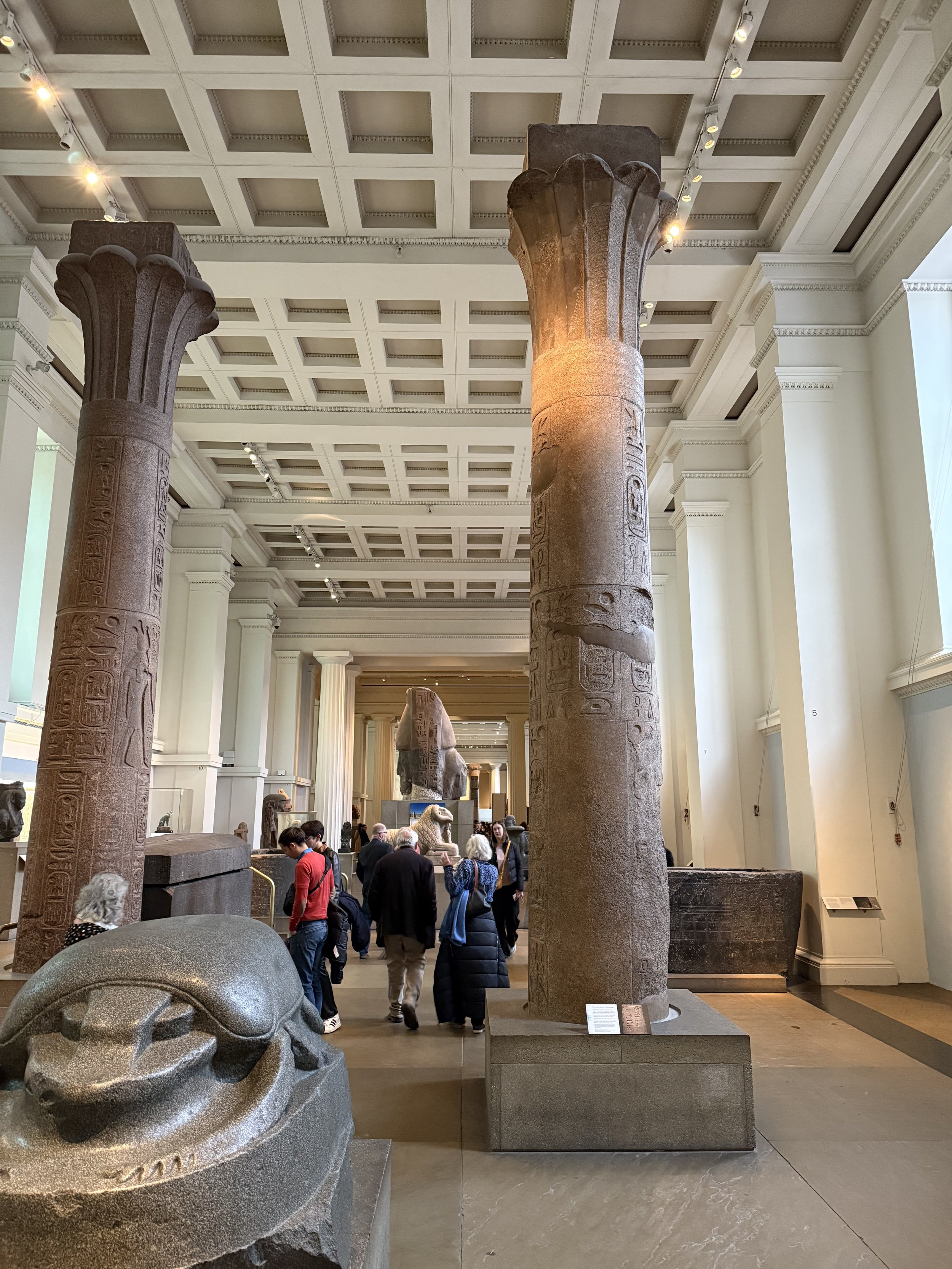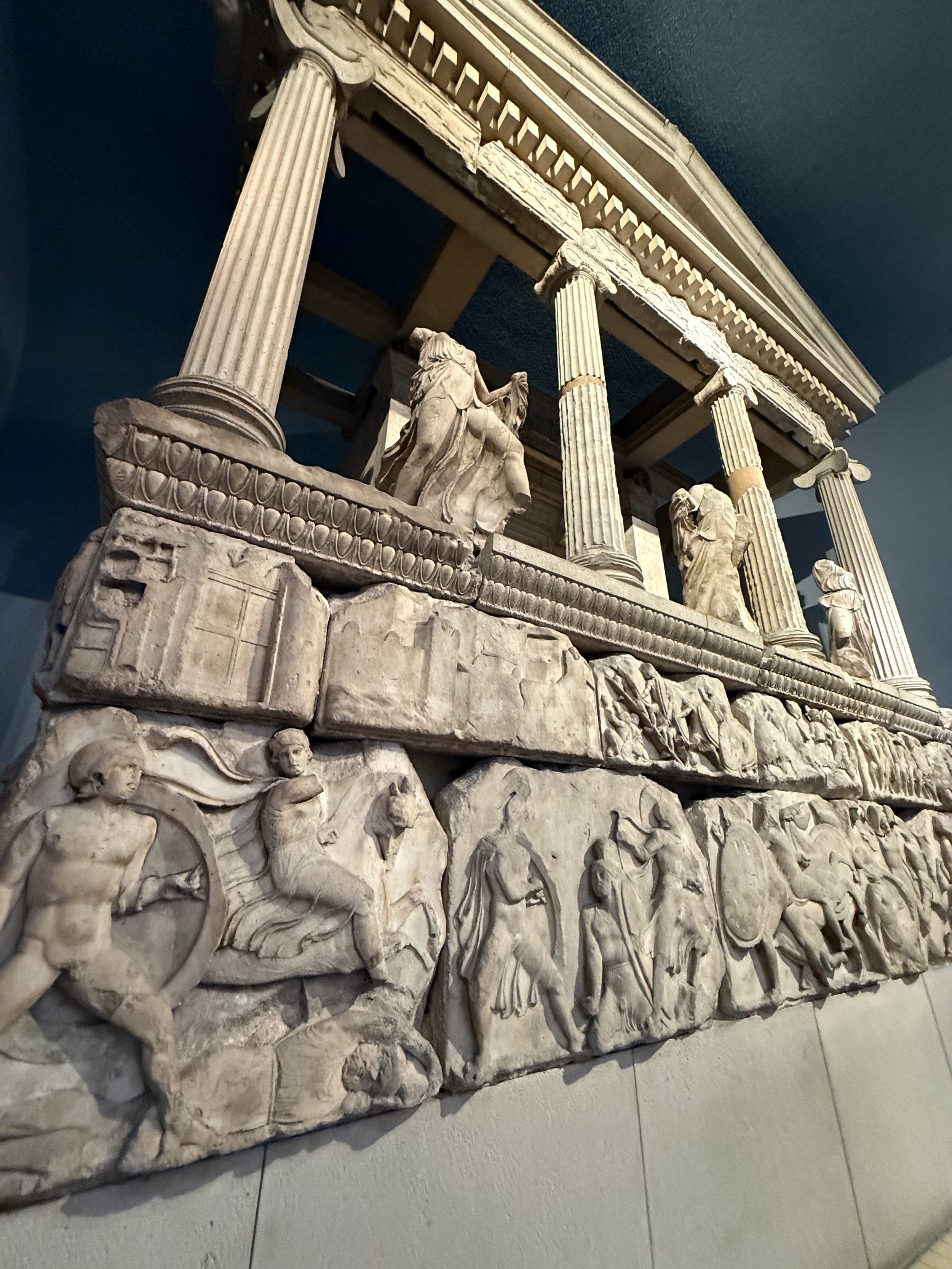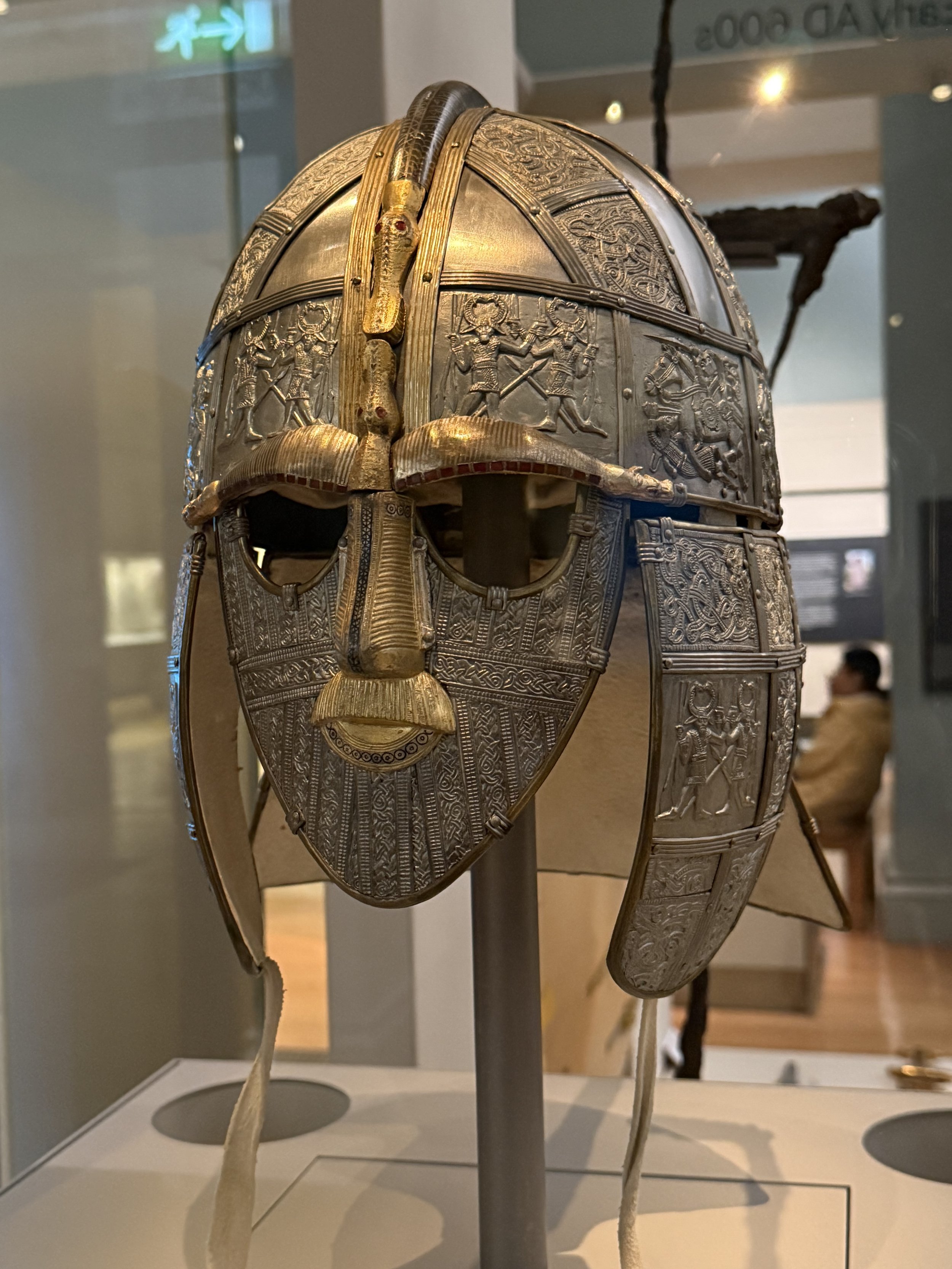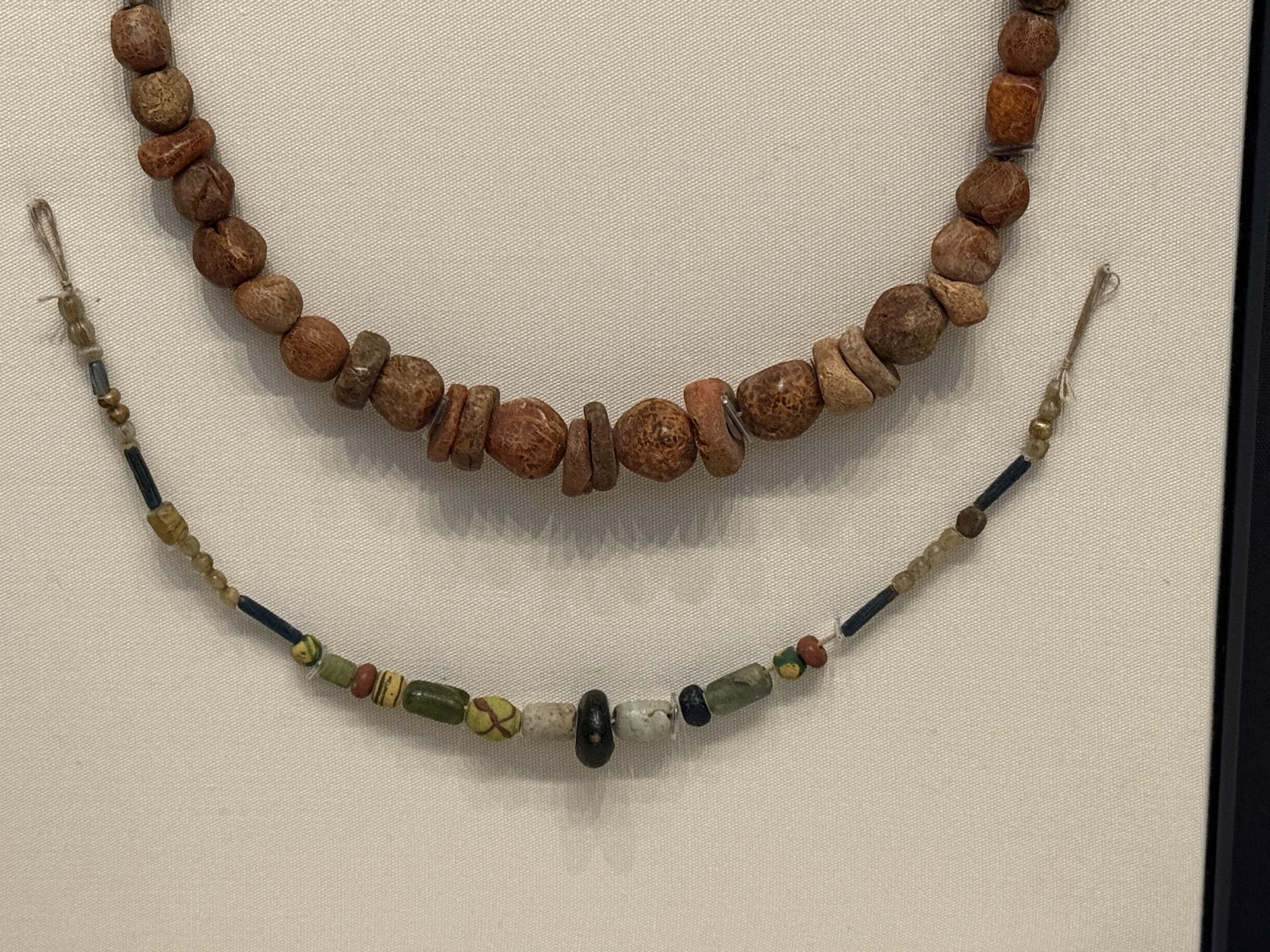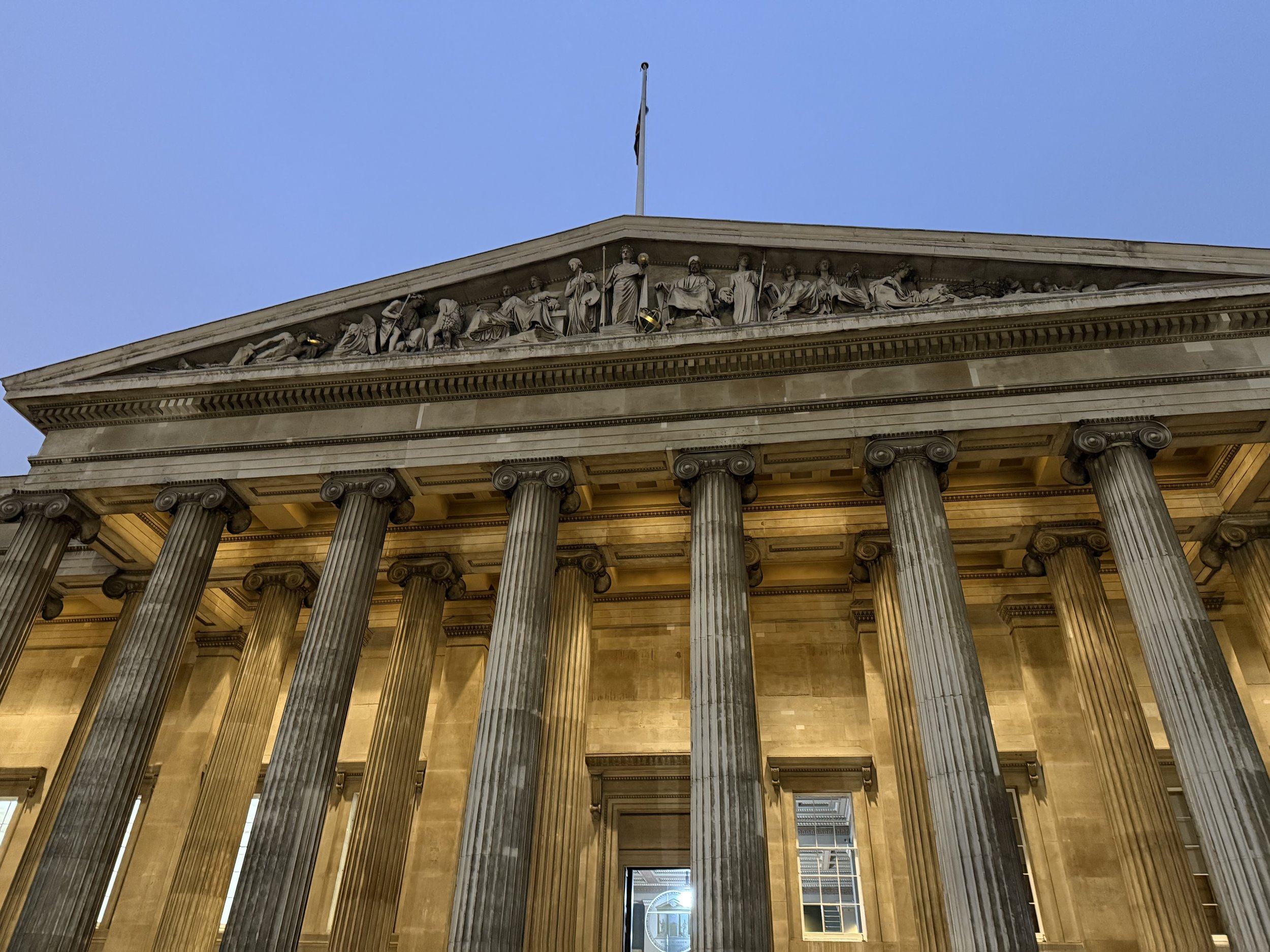MDATS Day 3: British Museum
My Journey: British Museum
11/7/2024
As a fan of Indianan Jones and Stargate I definitely enjoyed finding and seeing the Crystal Skull.
Rock Crystal Skull Late 1800’s.
Initially I missed these prehistoric beads but found them on a second pass by.
Pre-Historic Jewelry
There was a lot of Egyptian and other Fertile Crescent artifacts to look at. I could spent hours enjoying all these works of art. I did end up passing through the gallery a few times while I quested for glass and jewelry.
Like the Pre Historic jewelry, I did not really see all this wonderful Fertile Crescent and Egyptian jewelry.
Mesopotamia Jewelry
Among all the Egyptian artifacts there were some wonderful examples of core formed vessels, jewelry, amulets, and Calcite Vessel.
I plan to make some more jewelry inspired by Egyptian and Mesopotamian objects I saw here. I am absolutely in love with the lapis, cornelian, and gold look.
Collar
I was here for glass so I just moved quickly through all these wonderful work of Greek and Roman artisans. However; these were some that caught my eye.
There so much here from so many different places is hard to keep focus. I took pictures of so many things that I have yet to look at. I look froward to diving into all this pre Dark Ages stuff. Mixed in to all the statues and architectural pieces in lots a jewelry. It takes time to photograph both the pieces and the table. All while trying to not rush off to the glass I could see from the corner of my eye.
Reticulated class has held a special place in my heart since my first reticulated beads. From my visit to both the CMOG and the Morano Museum of Glass there were Venetian stile reticulated pieces that are among my favorites. Here was such a piece not as refined but conceptually the same, however, this is from the roman days.
Reticulated bowl
The collection of pre 1st century glass vessels illustrates the colorful and complex nature of this pre glass blowing work. This was done using methods such as casting, fusing, slumping, draping, and core forming. Much of these processes are now done in modern kilns but the structural techniques are basically the same. The heat work has changed from furnace work to kiln work. There so much here to inspire my kiln work.
I was constantly going from looking at glass and jewelry to taking in large sculptural and architectural pieces.
Marble Slabs Temple of Nike on the Arcopolis at Athens
So for a minute I visited Athens Greece as I explored the collection of Marbles.
Again Athens does a much better job at presenting the acropolis. As you walk through this very out dated presentation, you can’t help but be reminded that so much of what is in this museum is the result of colonization and looting. Many of these old museums suffer the same problem, where there is no deep contact to what is displayed, and only a rudimentary narrative being told. If one walks these halls without a preexisting understanding of history, one might just walk out thinking that was cool and really have know idea what you saw.
The Elgin Marbels
One of the first crafts I took to was miniature terrain, I grew up playing D&D and Warhamer and loved to make models for them. I still collet terrain and paint miniatures. I also have had N, HO, and O scale train sets. Oh, and legos. I can’t help but get drawn into all the models that are so common at these museums. This one I think is of a Roman Fort, but I missed taking a picture of the table so I am not sure.
Rosetta Stone
The display of the Rosetta Stone is a good example of what I am talking about; it just a cool stone sitting in the middle of the room, where it’s context as a linguistic linch pin is lost. I would have loved to have been taken on a linguist journey to the stone instead of just stumbling upon it and being like ‘wait what is that the stone’.
Roman Fort I Think
The 1st century saw the introduction of mass produced blown glass much of this Roman glass is utilitarian. From window panes to large vessels. Blowing glass allowed for the introduction of a variety of vessel shapes. While complex pieces can still be found, clear class vessels with basic handles dominate the period.
1st -2nd Centry Roman Glass
So many more shapes to play with trying to make. With all this greenish clear glass when a cobalt blue piece works its way into the display it really pops. You know I love the blue.
As I worked my way through the museum I came across this image as part of a display. This image was my inspiration for some of my first attempts at reproductions back in the 1990’s.
As you work your way towards the end of the Roman Era and the start of the Dark Ages, the presentations seem to be more and more focused on particular finds.
Ultimately the culmination of this it the Anglo Saxon displays built around the presentation on the Sutton Hue find.
Among the collection of finds is a few pieces of Anglo Saxon glass pieces. These Anglo Saxon beakers are striking in their dynamic shapes and decorations. Among all the finds, this one vessel made of clear and transparent red caught my eye. Red transparent glass is rare to find in the pre modern world.
Among all the things found in these anglo Saxon grave are these beads and the above glassware.
There many cultures reflected in the collection of grave goods both representing the influence of various far flung cultures and the variety of cultures that conjured and settled the north Atlantic region.
Vandal North
These influences include those of the Norse. With quite a few pieces showing the unique test in jewlery of Gotland.
One of the highlights of the museums was the Curndale Hord unlike Sutton Hue exhibit, I was not familiar with. I knew a bit about Sutton Hue from the movie and a couple of SCA classes I have taken on the finds, and a documentary or two. With the Curndale Hord I have only seen small samples of hack silver on my other Norse related museum trips this alone was an amazing find and an amazing display.
Curndale Hord
The last glass I hit up was some Middeval and Islamic World glass work that was on display. At this point I was tired and running out of time so I was moving quickly.
Jewelry inspired by history is not new this necklace was made in the mid 1800s as a gift for eminent archeologist Sir Austen Henry Layards wife. This is made from ancient Assyrian cylinder seals. It a love piece I have mixed feelings about the use of artifacts in the production of the piece. I lookfoward to making some my own pieces inspired by this trip.
Lady Layard’s Jewelry
I had very little time left for the post Viking World stuff. I quickly looked at the modern glass on exhibit and I was able to hit up the Africa Exhibit.
Some Modern Glass That Was On Display
Down stairs is the African exhibit it was the last thing I saw before heading to the museum shop.
There was so much left here undone, I lookfoward to a return visit to the museum.
Celling
Back up stairs from the Africa exhibit it was getting close to closing time so a quick run thought the gift shop and out the door I went.
Once out side I was struck by how cold it felt. I was also hit by the aroma of the roasted peanut stand just the smell made me fell warmer. I definitely forked over the funds to get some. They were damn good. Now it was time to do a quick google search and find some fish and chips.
It not been long since I got home and there been a lot going on and my supplies are very depleted but I did get these made there inspired by things I saw at the museum.
Tips and Lessons Learned:
Bring Earphones
Temperature Changes
Get the Rosted Peanuts
TThank You
Editing and Preparation: Trish, Heather, and Becky.
Patrons: Laura Terhune, Brian Bottoms, Leslie Hodgin, Ellen Rawson, DeAnna Gilbert, Alison Petrisek, Christine Seelye-King, Brianna Ariane Sykes, Laura Gosnell, Janice Gaulke and Molly Tobin.
Go fund me for MDATS.



